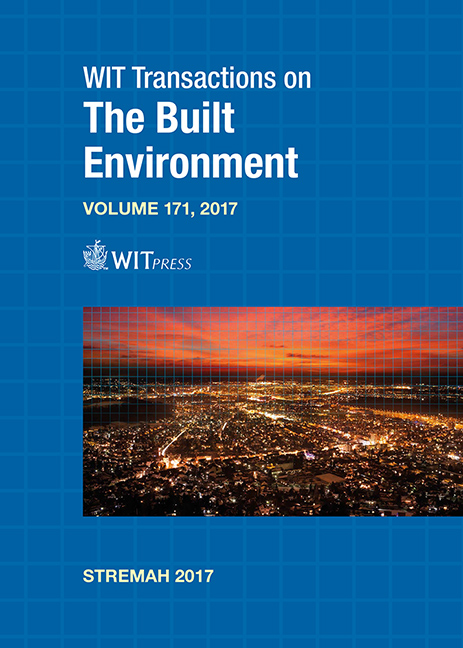PROTECTIVE ROOF SYSTEMS FOR ARCHEOLOGICAL SITES IN MEXICO
Price
Free (open access)
Transaction
Volume
171
Pages
12
Page Range
225 - 236
Published
2017
Paper DOI
10.2495/STR170201
Copyright
WIT Press
Author(s)
FRANCISCO J. SORIA, LUIS F. GUERRERO, ALMA B. GARCÍA
Abstract
When an archeological site is discovered and excavated, all its remains are usually incomplete and have not been maintained so, in a very short period of time, they can suffer important deterioration and destructive processes due to environmental factors. These structures have lost their “organic” character, to become fragments with different material conditions to those they were originally designed and used with, which make them highly vulnerable. To revert the negative effects of environmental factors over archeological ruins, in many of these sites, protective canopies or shelters have been installed under the logic of modern building techniques. Many of these roofs have been made with different materials, sizes or even visual and structural relationships with the archeological site, and of course have diverse degrees of effectiveness. Even though it is true that these new structures can protect, up to a certain degree, these heritage ensembles from climatic conditions, it is also undeniable that they generate other impacts that must be assessed. There are several aspects that should be considered during the design process to achieve an adequate material and visual integration with the site as it has been defined in different international encounters and documents dealing with proper built heritage conservation. The design of these new elements must be sustained on solid theoretical concepts, considering principles such as reversibility, respect, harmony, authenticity and integrity when inserting modern structures in preexisting cultural contexts. After analyzing several canopy or cover roof solutions adopted in different archeological sites in México, we have summarized a series of factors that influence the design of such elements that can be considered for future projects of this kind.
Keywords
protective canopies, shelters for archeological sites, built heritage conservation, preservation, protective roofs




